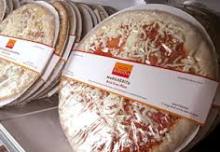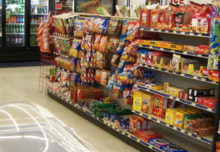The Ultimate Question – How Do I Get My Product Into Stores? Answers and Concepts
The question we are faced with the most is, how can I get my product into stores, obviously we have the simple answer with the Checkstand Program. With the concept of Checkstand Program being to get your product into the stores then let it sell. This proof first model is the basis of most of America’s retail stores. You focus first on getting the sales and data on your product so that you can then go on a sales blitz. When you are looking at your overall game-plan of attack on retailers then to answer your question of getting your product into stores you have to take inventory first.
Taking Inventory –
I don’t necessarily mean that you have to take inventory of how much product you have but that is a good first step as well. You have to have enough product and manufacturing lead times in order to fill orders quickly. I am more talking about the capabilities of your brand. What wins do you have currently, what proof of those wins do you have, how has your product done with certain market segments, do you have enough margins to go through a master distributor, do you know what stores have a need for your product, how many sales people do you have, out of those sales people do you have brand ambassadors?
These are a few of the questions you want to definitely answer. While we focus on the C Store and major Convenience Store Distribution model we also have had success with big box retailers. Major retailers such as Wal Mart are a big item on anyone’s list. Let’s start smaller and work up to there.
Capabilities of your brand:
When you are looking to get your product into stores.
Mr. Chossek went to Gelson’s Santa Barbara location late one night when things were slow and buttonholed the produce manager, who then connected him with the produce buyer. Mr. Chossek persuaded the buyer to let him give an in-store demonstration that he hoped would prove that Garlic Gold, a seasoning that features toasted organic garlic nuggets, would sell.
During a four-hour demo, Mr. Chossek sold 92 bottles. After that, he gave demonstrations in the store every weekend and four weeks later, Garlic Gold was sold in a second store. Within six months, it was on the shelves at every Gelson’s store. Every time he approached a new Gelson’s location, he gave the store a free case of the product to test. Garlic Gold is now carried in more than 3,000 stores nationwide.
http://www.nytimes.com/2010/10/21/business/smallbusiness/21sbiz.html?_r=0
Do you have the capability of giving in store demos? When you are looking at placing your product into stores, this is great way to offer a win win scenario with managers and buyers to give a test and not have to worry as much with long term back fire. You do in store demonstrations and that produces sells, grows your brand awareness, pushes for interaction, and really can close the deal with larger retailers. You may be thinking volume, volume, volume and that is great. Volume starts with a handful of stores repeatedly selling your product. Test 200 stores out and set up a live in store demo with free test, hand-outs, reviews, and nice presentation.
Proof comes from this very easy as you take inventory before you enter the stores and then after you leave. This is a record of the volume you have done and will come in handy later on when presenting to larger retailers.
Wins – only if you can prove it.
Like Denzel said in training day… It is only as good as what you can prove. You have to look at the proof and make sure it is beyond reproach. You have to have sales data and know that it will impress others.
Tip 4: Have your record speak for itself
Entrepreneurs need to decrease the risk a store takes when they carry your product. You need to show that you’ve got a successful track record, even if this is your first time. Create a Linkedin profile that discusses your experience. Seek out testimonials that support your expertise. Make your online presence fit accordingly with your expertise. When a retailer Googles you, what shows up?
Action item: Google yourself. Write blog posts that position you as an expert. Spruce up your Linkedin profile to position yourself as an expert.
http://markitors.com/how-to-get-your-product-into-stores/
Market Segments: The right place at the right time.
When you are going after your buyers. You have to make sure you are in line with the concept of the stores. You have to have a solid sales pitch built around that and you have to make sure you are moving the right direction with focus and tenacity.
Retailers like brands that connect with customers. No matter how good your product, if your brand doesn’t peak a customer’s curiosity, then it does the retailer no good to carry your product.
http://markitors.com/how-to-get-your-product-into-stores/
Check to see if the retailer offers any special programs that could give you a leg up, such as local vendor programs that serve as an entrée to regional markets or programs that offer breaks to women-owned or minority-owned businesses.
Kate Crosby’s Charlottesville, Virginia, company, Dionis Inc. , grew from a cottage industry to a small business as the line expanded from soap to include what is now the company’s driving product, lotion–all still using goat’s milk from the Blue Ridge Mountain area. The company had more than a decade of business under its belt before courting the attentions of Cracker Barrel . Crosby just knew her product was a perfect fit for the chain, which bills its 538 company-owned units in 41 states as “Half Restaurant, Half Store, All Country.” And the company agreed, first placing Crosby’s products in just a fraction of its stores to test its customer interest.
Happy with the placement she was getting in just one district, it never occurred to Crosby that her products could be a national presence in Cracker Barrel stores. “It was above our radar,” she recalls. “But one day we got called out of blue, and we went national. We went from 10 to 15 stores to 350 and had to start ordering [in quantities of] 50,000 and 100,000.”
4. Determine who should pitch your product to retailers. Your decision to either offer the product to retailers yourself or hire a representative to do it for you depends a lot on your product as well as on your strengths as a businessperson.
http://www.entrepreneur.com/article/83776
BONUS STEP: Start small and build… Look for Wins First
When you are growing a business… don’t forget the first step – Growing. W. Robins – http://www.thewillrobins.com/
5. Sell at independents
Start small and sell at independent shops and even Web shops. The more exposure and sales you get the better, creating legitimacy for your product, so you can approach the big retailers and say, “I sell 10,000 widgets a day, perhaps you’d like to sell them, too?”
7. Slow and steady wins the race
Start off with growing your business and building your brand, get the product into enough local stores before going national.
https://www.openforum.com/articles/19-ways-to-get-your-product-in-front-of-retailers/
We take care of that with Check Stand Program. When you place your product into the hands of the mom and pop stores and you gain traction, you are growing. Reorders are coming in and you can then move forward. So many businesses stall from chasing big and never growing. You have to get wins and always be looking for the next win.
Do you need a loss leader to gain attention?
A loss leader (also leader)[1] is a pricing strategy where a product sold at a price below its market cost[2] to stimulate other sales of more profitable goods or services. With this sales promotion—marketing strategy, a “leader” is used as a related term and can mean any popular article, i.e., one sold at a normal price.[3]
http://en.wikipedia.org/wiki/Loss_leader
Take the ball in your court:
Sales People can drive your brand. Are you driving your brand? In most cases the best sales person is going to be you. If you are counting on other people to drive your brand… you will be waiting, and waiting. You have to give everyone a pep talk daily. You have to have the vision for your brand and pushing that vision into your sales reps. You have to give them a power point, trade info, research, leads, and follow up. You have to manage them. If you are not capable then you have to hire someone on that is. This is very important and nearly impossible. It is what it takes to make a stand and get forward progress.
Rome was not built in a day… a lot of people say that. I don’t want you to build your brand in a day either. I would rather say, Rome was built by laying a few bricks every day. Are you growing? Do you need more members on the team? Look for creative ways to grow your brand, manage your sells people, push for awareness, claim space that you can sell in, become unique with the way you approach retailers, look for demo spots, and most importantly – get your product into stores!
At its most basic, a sales program is defined principally by what you sell, who you sell to, and how you sell. Beyond that, it all boils down to staying focused on the details outlined next, suitable for both sales representative and for owners of small businesses http://www.wikihow.com/Sell-a-Product
By Anthony Bautista
Connect with me on Google Plus at +Anthony Bautista




